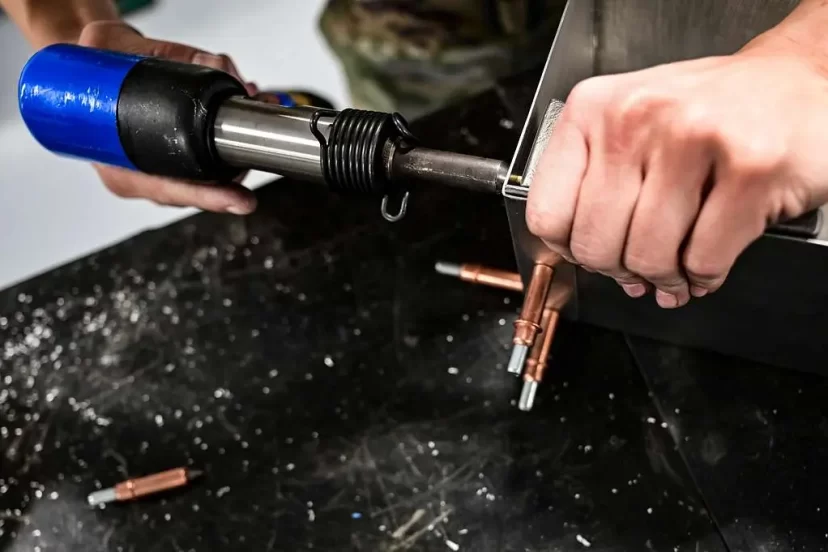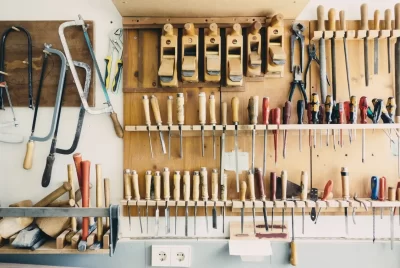Rivet Tools – Everything You Need to Know
Rivet tools are a vital component in the toolkit of any DIY enthusiast or professional in various industries. These versatile tools offer a reliable way to join materials securely, and in this comprehensive guide, I’ll take you through all the essential aspects of rivet tools, from understanding their types to mastering their usage.
Types of Rivet Tools
These tools come in several types, each suited to specific applications and preferences:
Hand Rivet Tool

Hand rivet tools are perhaps the most common and user-friendly option. They operate manually and are well-suited for small to medium-sized projects. Their simplicity and ease of use make them a popular choice among DIYers.
Pneumatic Rivet Tool
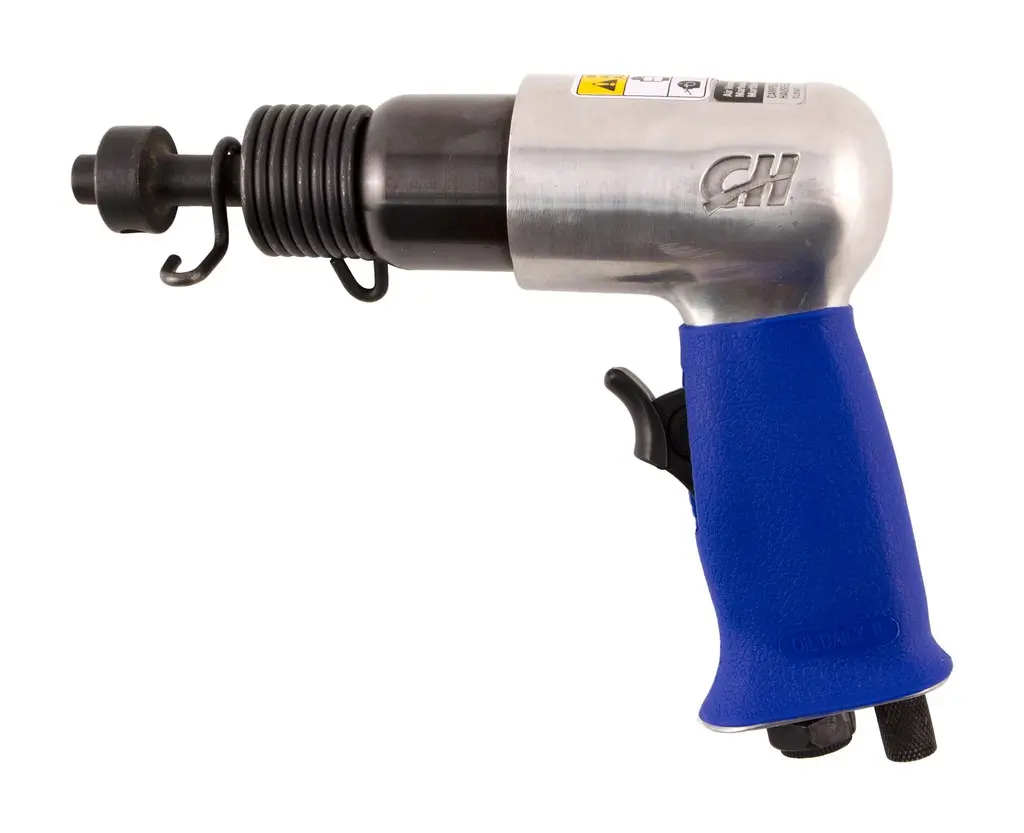
Pneumatic rivet tools are powered by compressed air. They offer speed and efficiency, making them ideal for high-volume tasks where productivity is crucial. These tools are commonly used in manufacturing and assembly lines.
Electric Rivet Tool
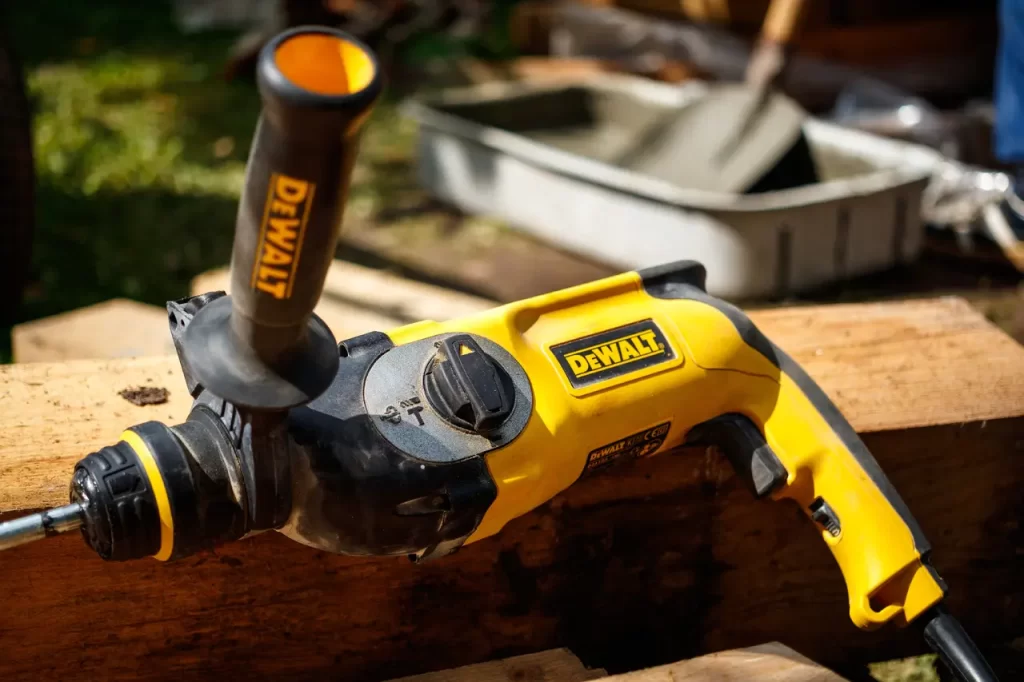
Electric rivet tools are powered by electricity and provide a balance between ease of use and speed. They are versatile and can handle a wide range of projects, from automotive repairs to home improvements.
Hydraulic Rivet Tool
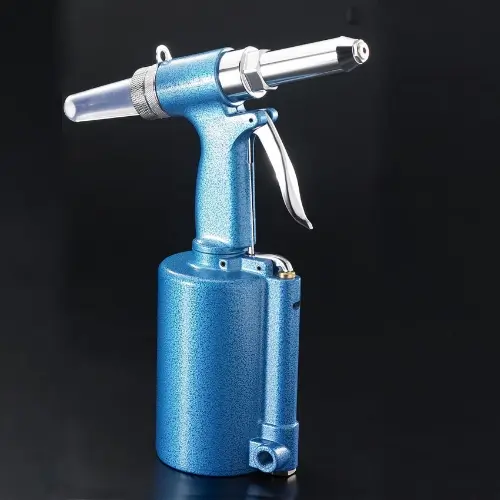
Hydraulic rivet tools are heavy-duty options that exert substantial force. They are designed for demanding applications, particularly in industries like aerospace and construction, where precision and power are essential.
Common Uses of a Rivet Tool
Rivet tools have a broad range of applications across various industries and projects, including:
- Automotive Repairs: Rivet tools are frequently used to replace or repair automotive body panels, exhaust systems, and interior components.
- Metalworking: In metal fabrication and sheet metal work, rivet tools are employed to join and secure metal components.
- Woodworking: Craftsmen use rivet tools to create sturdy wooden joints in furniture and cabinetry.
- Construction: In the construction industry, rivet tools play a crucial role in assembling steel structures and connecting building components.
- DIY Home Improvement: For DIY enthusiasts, rivet tools are indispensable for tasks like fixing gutters, attaching fixtures, and building small structures.
How to Choose the Right Rivet Tool
Selecting the appropriate rivet tool is paramount for achieving successful outcomes in your projects. To make the right choice, consider the following factors:
Material Compatibility
The type of material you’re working with is a significant factor in choosing the right tool. Manufacturers design different rivets for specific materials, such as metal, wood, plastic, or composite materials.
Rivet Size and Type
Rivets come in various sizes and types, including blind rivets, solid rivets, and tubular rivets. It’s essential to match the rivet size and type to your project’s requirements for a secure and long-lasting joint.
Project Size and Complexity
Evaluate the size and complexity of your project. For small, straightforward tasks, a manual hand rivet tool may suffice. However, larger projects or those involving tough materials may require the power and precision of pneumatic, electric, or hydraulic rivet tools.
Steps for Using Hand Rivet Tools
Hand rivet tools are a popular choice due to their simplicity. Here’s a step-by-step guide to using them effectively:
Step 1: Gather Your Materials
Before you begin, ensure you have all the necessary materials and safety equipment on hand. You’ll need the rivet, the workpiece, safety goggles, gloves, and ear protection (if applicable).
Step 2: Choose the Right Rivet
Select the appropriate rivet for your project. Consider factors like material compatibility and the required rivet size and type.
Step 3: Prepare Your Workpiece
Inspect the workpiece to ensure it’s clean, properly aligned, and ready for riveting. Any misalignment or debris can affect the quality of the joint.
Step 4: Position the Rivet
Insert the chosen rivet into the pre-drilled hole in the workpiece. Ensure that the rivet is flush with the material’s surface.
Step 5: Operate the Hand Rivet Tool
Grip the handles of the hand rivet tool and squeeze them together. This action compresses the rivet, causing it to expand and secure the materials together. Pay attention to the tool’s instructions and ensure a firm, consistent squeeze.
Step 6: Inspect and Test
After riveting, inspect the joint to confirm that it’s secure and visually appealing. Depending on the project, you may need to perform additional tests to ensure the joint’s strength.
Safety Precautions
Safety should always be a top priority when working with rivet tools. Here are some crucial safety precautions to keep in mind:
- Eye Protection: Wear safety goggles to protect your eyes from any flying debris or metal shavings generated during the riveting process.
- Ear Protection: If you’re using pneumatic or hydraulic rivet tools that generate loud noise, consider wearing ear protection to prevent hearing damage.
- Hand Protection: It’s essential to wear gloves, especially when handling metal or sharp-edged materials, to protect your hands from cuts and injuries.
- Workspace Safety: Maintain a clean and organized workspace. Remove any obstacles or clutter that might pose tripping hazards or interfere with your work.
Troubleshooting Common Issues
Even with proper usage, issues may occasionally arise when using rivet tools. Here are some common problems and their solutions:
Misaligned Rivets
If you notice that the rivet is not properly aligned with the workpiece, reposition it before attempting to secure it. Misalignment can result in weak joints.
Insufficient Pressure
Check the tool’s pressure settings, especially in the case of pneumatic or hydraulic rivet tools. Adjust the pressure as needed to ensure a proper, secure connection.
Jammed
If your rivet tool becomes jammed or experiences difficulties during operation, stop immediately and disconnect the tool from the power source. Carefully inspect the tool for obstructions, damaged parts, or signs of wear. Clear any obstructions and address any issues before resuming work.
Advantages
Using rivet tools offers numerous advantages that make them a preferred choice for many applications:
- Strong and Reliable Joints: Rivets create durable connections that can withstand considerable stress and load.
- Versatility: Rivet tools can be used with various materials, making them suitable for a wide range of projects and industries.
- Cost-Effective: Rivet tools are affordable, and the rivets themselves are relatively inexpensive. This cost-effectiveness makes them an attractive choice for both professionals and DIYers.
Limitations
While rivet tools are versatile and effective, they do have some limitations that you should be aware of:
- Not Suitable for All Materials: Some materials, such as ceramics or certain plastics, may not be compatible with riveting. In such cases, alternative joining methods may be required.
- Requires Skill and Practice: Achieving optimal results with rivet tools may require practice and skill development, particularly when using more advanced tools like hydraulic or pneumatic riveters.
Expert Tips for Efficient Rivet Tool Usage
To make the most of your rivet tool and ensure efficient and effective operation, consider these expert tips:
- Practice on Scrap Materials: If you’re new to using a rivet tool, practice on scrap materials before starting your project. This helps you get familiar with the tool and technique.
- Maintain Consistent Hand Pressure: When using hand a rivet tool, maintain a consistent level of hand pressure while squeezing the handles. This ensures that the rivet is set evenly and securely.
- Keep Spare Rivets and Replacement Parts: It’s a good practice to keep a supply of spare rivets and essential replacement parts on hand. This ensures that you can quickly address any issues that may arise during your project without interruptions.
Conclusion
In conclusion, rivet tools are indispensable for creating strong, reliable joints in a wide range of projects and industries. Whether you’re a DIY enthusiast or a professional, understanding the types of riveting tools available, how to choose the right one, and mastering their usage can significantly enhance your project outcomes. Remember to prioritize safety, practice, and proper maintenance to ensure the longevity and efficiency of your riveting tools. With the knowledge and expertise gained from this guide, you’ll be well-equipped to tackle your next riveting project with confidence.
Frequently Asked Questions
Q1. Can I use rivet tools on plastic materials?
Yes, there are specific rivets designed for plastic applications. These rivets have unique features that allow them to securely join plastic components.
Q2. What is the main advantage of using a pneumatic rivet tool?
The primary advantage of a pneumatic rivet tool is its speed and efficiency. They can quickly set rivets in high-volume production environments, making them a preferred choice for manufacturing and assembly lines.
Q3. Do I need to lubricate my hand rivet tool?
Yes, it’s essential to lubricate your hand rivet tool regularly. Lubrication helps reduce friction in moving parts, ensuring smooth operation and prolonging the tool’s life. Refer to your tool’s manual for specific lubrication instructions.
Q4. Can I remove rivets once they are set?
Generally, people consider rivets as permanent fasteners. While it’s possible to remove them, it can be challenging and may damage the materials involved. For disassembly purposes, consider alternative fastening methods like screws or bolts.
Q5. Are hydraulic rivet tools suitable for beginners?
Hydraulic rivet tools are powerful and typically reserved for more experienced users due to their force and complexity. Encourage beginners to start with manual or electric rivet tools to develop their skills before progressing to hydraulic equipment.
Summary
Rivet tools are essential for secure material joining in various industries and projects. This guide covers types of rivet tools, selection considerations, steps for using hand rivet tools safely, advantages, limitations, and expert tips for efficient usage and maintenance. It equips users, from novices to professionals, with knowledge for successful riveting projects. Happy Riveting!

